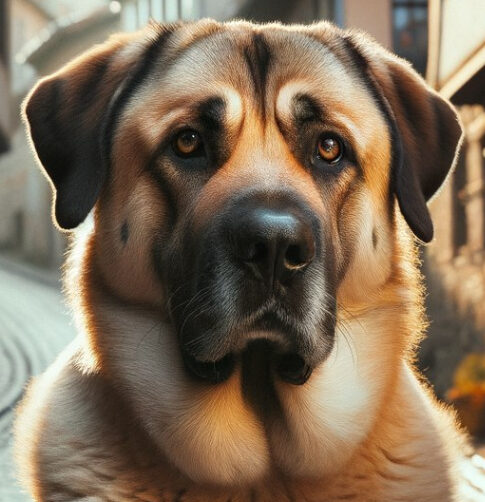Breed Characteristics and History of the Anatolian Shepherd Dog
The Anatolian Shepherd Dog is a breed steeped in history, revered for its intelligence, loyalty, and exceptional guarding abilities. Originating from the rugged landscapes of Turkey, this ancient breed has served as a protector of livestock for thousands of years. This article delves deep into the breed characteristics and history of the Anatolian Shepherd Dog, providing a comprehensive guide for enthusiasts, prospective owners, and dog lovers alike.
Definition and Overview
The Anatolian Shepherd Dog is a large, powerful working dog developed to protect livestock from predators. Known for its imposing size, intelligence, and independent nature, the breed is a favorite among farmers and ranchers worldwide.
- Breed Name: Anatolian Shepherd Dog
- Origin: Turkey (Anatolia region)
- Role: Livestock guardian
- Size: Males typically weigh 110-150 pounds; females weigh 80-120 pounds.
- Coat: Dense, double-layered coat that can withstand extreme weather conditions
- Lifespan: 11-13 years
Main Characteristics:
- Protective Nature: The breed is known for its unwavering loyalty and protective instincts.
- Physical Strength: Muscular and agile, Anatolian Shepherds are built for endurance and work.
- Temperament: Calm, independent, and intelligent, they form strong bonds with their owners but are wary of strangers.
Historical Background
The Anatolian Shepherd Dog’s history is as vast and rugged as the Turkish plains it hails from. The breed is believed to have descended from ancient mastiff-type dogs and sighthounds, which were brought to the region thousands of years ago.
Origins in Ancient Turkey
The Anatolian region of Turkey has a history of livestock farming that dates back over 6,000 years. Farmers needed a reliable guardian to protect their herds from predators like wolves, jackals, and bears. The Anatolian Shepherd Dog was bred to fulfill this role, combining strength, intelligence, and endurance.
Role as Livestock Guardians
These dogs were not herders but protectors. They lived among the flock, blending in with the sheep and goats to deter predators. Their loyalty and protective nature made them indispensable to Turkish shepherds.
Global Recognition
The Anatolian Shepherd Dog gained international attention in the mid-20th century when it was introduced to countries like the United States and the United Kingdom. Today, the breed is recognized by major kennel clubs, including the American Kennel Club (AKC) and the United Kennel Club (UKC).
Key Features of the Anatolian Shepherd Dog
Physical Traits
- Size: Large and muscular, with a broad head and powerful build.
- Coat: Double-layered, weather-resistant coat; colors include fawn, brindle, and white, often with a black mask.
- Eyes: Almond-shaped, dark brown, and expressive.
- Ears: Medium-sized, triangular, and typically drop down.
Temperament
- Loyalty: Forms strong bonds with family, including children and other pets.
- Independence: Prefers to think and act autonomously, a trait developed from centuries of working without direct supervision.
- Protectiveness: Highly alert and territorial, making them excellent guardians.
Health and Longevity
- Common Health Issues: Hip dysplasia, elbow dysplasia, and hypothyroidism are notable concerns.
- Lifespan: With proper care, they live 11-13 years.
- Diet: A high-protein diet suited to their size and activity level is essential.
Benefits and Importance of the Breed
- Livestock Protection: The Anatolian Shepherd excels in guarding livestock, reducing losses from predators.
- Family Guardian: Their protective instincts extend to their human family, making them reliable companions.
- Conservation Efforts: These dogs are used in wildlife conservation programs, such as in Namibia, where they protect livestock from cheetahs, reducing human-wildlife conflict.
- Adaptability: Despite their size, they adapt well to various climates and terrains.
Challenges and Drawbacks
- Training Difficulties: Their independent nature can make training challenging, requiring patience and consistency.
- Space Requirements: Anatolians need ample space to roam and are not suited for apartment living.
- High Energy Needs: They require regular exercise and mental stimulation.
- Potential Aggression: Without proper socialization, their protective instincts may lead to aggression toward strangers or other animals.
Future Trends and Developments
- Increased Popularity: As more people recognize their versatility, the breed’s popularity is growing.
- Conservation Roles: Continued use in wildlife conservation programs highlights their adaptability.
- Breed Preservation: Efforts are being made to preserve the breed’s lineage and historical traits.
FAQs About the Anatolian Shepherd Dog
1. Are Anatolian Shepherds good family pets?
Yes, they can be excellent family pets for experienced owners who understand their needs and temperament.
2. Do they require a lot of grooming?
They shed heavily twice a year but require only weekly brushing to maintain their coat.
3. Are they aggressive?
Anatolian Shepherds are not inherently aggressive but can be territorial and protective if not properly socialized.
4. How much exercise do they need?
They require moderate exercise, such as daily walks and access to a secure outdoor space.
5. What makes them unique compared to other breeds?
Their combination of size, intelligence, independence, and protective instincts sets them apart, especially as livestock guardians.
